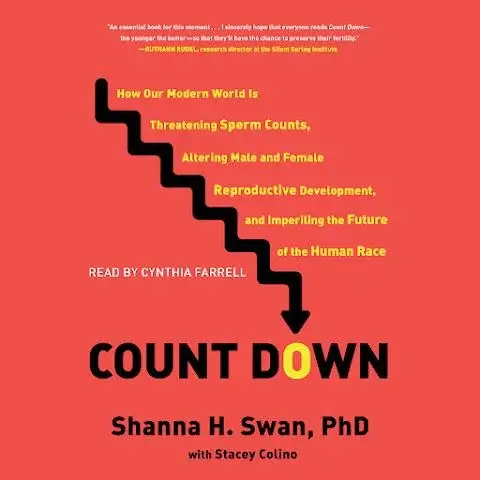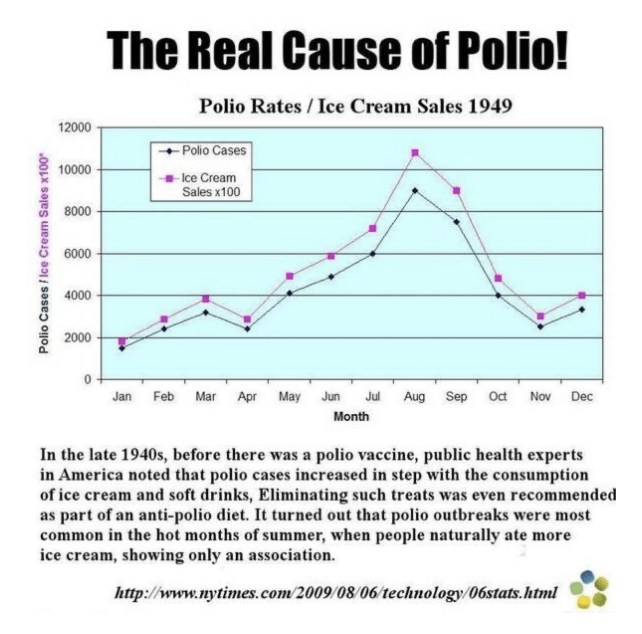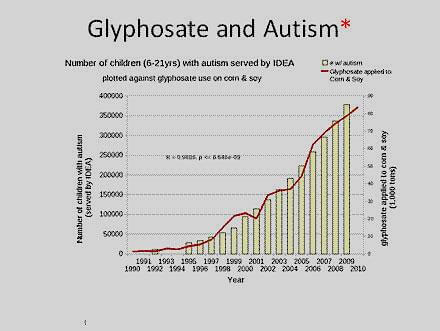In October 2022, in what could turn into a landmark case, a Missouri woman sued cosmetics company L’Oréal, claiming that her uterine cancer was caused by prolonged exposure to phthalates — chemicals that were ingredients in her hair straightening product. The filing of the suit coincided with the publication of a journal article finding an “association” between the use of hair products containing the chemicals and uterine cancer.
Suits making similar claims are becoming increasing common as a debate rages about the alleged dangers of phthalates. June 2022, the advocacy group Center for Science in the Public Interest sued the US Food and Drug Administration to force them to rule on the safety of phthalates, a chemical used in food packaging and processing that it calls “ubiquitous and harmful”.
The history behind the storm
For many years, advocacy groups and some scientists have been claiming that a common compound present in children’s toys, food packaging and some medicines can cause cancer, Alzheimer’s disease and a host of other chronic diseases.
Phthalates are widely used chemicals in plastic production. They were introduced in the 1920s, replacing earlier additives that make plastics more flexible. They are found in an array of products, from cosmetics to industrial paints, medical tubing to drug capsules. More than 3 million tons are used globally each year. The news media is filled with articles citing “expert groups” or scientists claiming the chemical causes serious harm.
It’s become a cause célèbre among scientists who have made the controversial field of “endocrine disruption” their central focus, notably Shanna Swan, an epidemiologist who has been making this case for decades. Back in 2012, she teamed with the Center for Health, Environment and Justice to argue for the banning of vinyl back packs, book covers and lunch boxes, arguing that they were imperilling children.
The National Toxicology Program (NTP), looking specifically at the phthalate DEHP, found that Swan did not show any statistical association between DEHP metabolites and genital development.
 Swan went silent for years, then resurfaced in a co-authored controversial study (2017) and controversial book (2021) making a speculative claim that the clock is ticking on the “future of the human race … imperilled” by fertility-damaging phthalates.
Swan went silent for years, then resurfaced in a co-authored controversial study (2017) and controversial book (2021) making a speculative claim that the clock is ticking on the “future of the human race … imperilled” by fertility-damaging phthalates.
Toxicologist and former director of the National Institute for Environmental Health Sciences, Linda Birnbaum, who is a well-known crusader focusing on what she calls “endocrine disrupting chemicals,” called studies into phthalates “a wake-up call to understand that early life exposure to this class of chemicals is affecting our children”.
Not surprisingly, the issue has sparked widespread calls in the media and even among some scientists to ban their use, and spawned an array of law suits, such as the CSPI challenge of the FDA.
Let’s separate hard science from “association”
So how can something ‘proven’ to be so dangerous be found in so many products we use daily? The answer, as the NTP found when first examining the data years ago, is that it can’t.
Studies have demonstrated detectable levels of phthalate metabolites in human urine and these are often viewed as concerning because phthalates can be toxic but likely at a much higher dose than observed in humans.
Others, including widely-used DEP, were evaluated and shown to be safe as used, and studies since then have not changed the mainstream consensus. Australia’s risk agency evaluated oft-used DINP, concluding “current risk estimates do not indicate a health concern from exposure of children to DINP in toys and childcare articles even at the highest (reasonable worst-case) exposure scenario considered’. The Europe’s risk agency concluded “there is no conclusive scientific evidence that DEHP exposure via medical treatments has harmful effects in humans.”
These findings do not mean we should not be vigilant in regulating this substance, and be open to new findings. In fact, some phthalates were banned in 2009 and the Consumer Product Safety Commission (CPSC) does appropriately limit the amount of the chemical as a precautionary measure in certain children’s products as a precautionary measure, although the evidence supporting the restrictions are scanty. And some states, such as Vermont and California, have instituted limited bans and restrictions.
The key point is that any chemical can pose a health hazard. It’s critical in our highly complex world to evaluate the risks and rewards of using any substance, and rely on established risk-benefit analysis. DEHP, for example, is a critical component in medical devices. As the European Commission noted in its review, “Each alternative to DEHP, however, must also be evaluated with regard to their functionality in respect to medical devices. The risk and benefits of using alternative plasticizers should be evaluated case by case.”
The U.S. Centers for Disease Control and Prevention offers a comprehensive list of links to actual scientific studies on the chemical—none of which echo the alarmist conclusion that all plasticizers should be banned. “Phthalates are metabolized and excreted quickly and do not accumulate in the body,” the CDC has concluded,” adding the caveat that “More research is needed to assess the human health effects of exposure to phthalates.”
Reviewing the studies
Yes, we encounter phthalates and dozens of other common chemicals everyday, and yes, they show up in urine samples. It’s estimated that more than 160 chemicals can be detected in human urine, many of which are potentially dangerous if consumed at high enough doses over a long enough period of time.
That sounds scary, but as scientist’s note, the difference between chemical exposure at a dangerous level and something safe as used is the dose and duration of exposure. The simple fact is that while studies have shown a “correlation” of certain chemicals with adverse health consequences, the standard is to find a causal link. This is likely a big contributing factor behind why President Biden’s FDA denied a petition to ban all phthalates in food packaging early 2022 — the data are not convincing, and the adverse impact of the ban would vastly outweigh its benefits.
For example, a 2021 paper in Environmental Pollution was labelled big news in crusading circles, but why? Although the authors claimed, “This study adds to the growing database on the impact of plastics on the human body and bolsters public health and business cases for reducing or eliminating the use of plastics,” they only showed a very weak correlation between high phthalate levels and increased risk of death. For context, the hazard ratio for smoking in lung cancer is 5. A value of less than 2, which is what they found, does not confer much risk.
Another study showed increase child sarcoma risk where parents were found to ingest higher levels of phthalate containing medicine. But, again, the data are to be taken very lightly. We are talking about correlation not causation and so many other factors can be in play here. It’s not clear whether the parents on higher doses of medicine, for example. There are numerous other variables that make it clear that the association/correlation does not remotely equate with causation. Science is very unlikely to be this simple. This is the issue with epidemiological studies. They identify trends but not pathways to explain them which often leaves a lot of room for a more ‘colorful’ interpretation of the data that can be easily moulded to suit your own bias.
Correlation can easily be confused with correlation, corrupting science analysis … and feeding poor journalism and advocacy campaigns, while swelling the coffers of extremist environmental groups. It could even promote a fake health crisis. In the late 1940s, when the origin of polio remained unknown, some public health experts recommended cutting back on ice cream, which causation charts showed were “linked” to the disease.

You might be thinking so what? There is no danger in siding with the more alarmist conclusions and trying to avoid phthalates (although good luck with that!) Everyone is free to make their own choices, but it must be appreciated that there is a huge difference between something being “linked” to an increased risk of a disease and something that is demonstrated to be causally involved.
Take cancer for example. Over the last decade so many common foods or other items have been sold to us as the cause for cancers. The sweetener in your favorite soda, some forms of candy, cheese … the list goes on! The same issue persists throughout these studies; no causation is ever shown. All we ever see is a correlation.
An informative example of this is a decade-long study that concluded in 2022 that claimed to show the artificial sweeteners present in many sodas MIGHT be associated with increased cancer risk. It sounds scary but many experts in the field have urged severe caution after looking at the data. Michael Jones of the Institute of Cancer Research comments:
“The link between artificial sweeteners and cancer reported in this study does not imply causation — it is not proof that artificial sweeteners cause cancer.” Instead, a large variety of lifestyle differences between high and low risk participants that were left out of the study “may partly or fully explain the association”.
It’s clear that being healthy in as many ways as possible can reduce risk of serious illness but it is unwise to try and boil everything down to single chemical factors, especially when the chemicals are used in products that offer enormous value. Especially when you consider that the biggest driver in whether or not someone develops cancer appears to be one that is entirely out of our control; genetics.
Cancers arise due to an accumulation of genetic mutations that result in changes in how cells grow and multiply. While some external factors can influence the risk of developing such mutations, only a very small handful are regarded as definitely causally linked such as smoking and lung cancer or UV radiation and skin cancer. Many mutations appear to be entirely random.
When studies that suggest cancer can be boiled down to eating too many Skittles start to gain traction on social media, we risk harboring a misunderstanding of how complex cancer is and how it needs to be treated.
Alarmist consequences of making decisions based on hyped studies
This alarmist rhetoric around everyday food items have also fomented an advent of so called ‘alternative therapies’. Articles tout potentially dangerous alternative treatments as an alkaline diet because reducing the amount of acidity in the body is somehow attributed to impairing cancer growth. There is no scientific basis for the claim and, according to Julie Lanford who has over 15 years of working in the field of nutrition in oncology, an alkaline diet “does not kill cancer. Thankfully, our kidneys and lungs keep our pH tightly regulated, right where they should be”.
Nonsense like this becomes very harmful when patients reacting to media stories prompted by association and correlations studies seek alternative treatments over clinically validated options like chemotherapy. We often think of scientific misinformation as just some tin foil hat stuff your uncle talks about when he is drunk, but it can have severe consequences when it gathers traction.
Patients have been known to delay surgery, radiation treatment and chemotherapy to try alternative means, all the while the cancer continues to grow, spread and become more life threatening. It isn’t just cancer too. Some patients suffering many serious conditions forgo effective remedies in favor of the latest line of snake oil.
Skyler Johnson, former Yale School of Medicine chief resident in cancer treatment highlights the real risk of following this misinformation:
The bottom line is that alternative and complementary medicines marketed and used as treatment for cancer are associated with an increased risk of death, if they lead patients to not use accepted medical cancer therapies.
Scare rhetoric is even more dangerous when it comes from seemingly reliable sources. There are plenty of examples of people online with a ‘doctor’ title telling you that they know the real cause behind serious illness. A perfect example is Stephanie Seneff, a Ph.D. computer scientist who, for many years, has tried to convince us that genetically modified foods are evil and that glyphosate (Roundup) is responsible for many of our ailments. She claims that glyphosate causes autism and tries to back this up with data showing the incidence of autism parallels an increase in the sales of glyphosate.

It is a classic example of manipulating a correlation and claiming you have shown causation. Guess what: autism has also increased with the increased consumption of organic foods:

Correlation is not causation but, if marketed the right way, it can be manipulated to look like it is. Social media has become the perfect breeding ground and it creates dangerous scenarios, according to cardiologist Professor Joseph Hill:
There is a flood of bad information on the internet and social media that is hurting human beings. It’s not just an annoyance, this actually puts people in harm’s way.
The take home message is simple: let the appropriate health agencies do their work, evaluating the risks in real-world scenarios of the tens of thousands of chemicals we are exposed to daily. If a useful chemical is shown to be harmful, let’s restrict or ban it. But let’s not over-react based on associations and correlations, especially when a chemical is so critical to the proper functioning of a product that offers societal benefits. So let the research on phthalates continue.
What’s the lesson here? Alarmism spreads and sells like never before. Think twice before you buy into it, especially when evaluating alleged dangers to your health. The human body is uniquely adapted to withstand exposure to a variety of environmental and chemical ‘threats’; over-reacting to them can often be more dangerous than running scared. It can have a much bigger impact than you can imagine. If a study makes a claim but shows no biological causation, there are likely other factors in play — including, often, the ideological and economic interests of those spreading the alarm.
Sam Moxon has a PhD in tissue engineering and is currently a research fellow in the field of regenerative medicine. He is a freelance writer with an interest in the development of new technologies to enhance medical therapies. Follow him on X @DrSamMoxon
This article previously appeared on the GLP Nov 29, 2022.

































